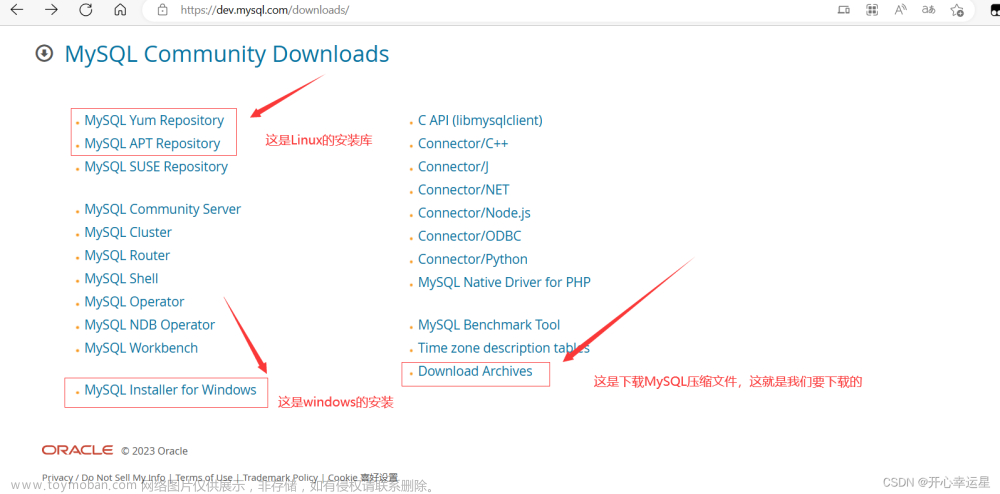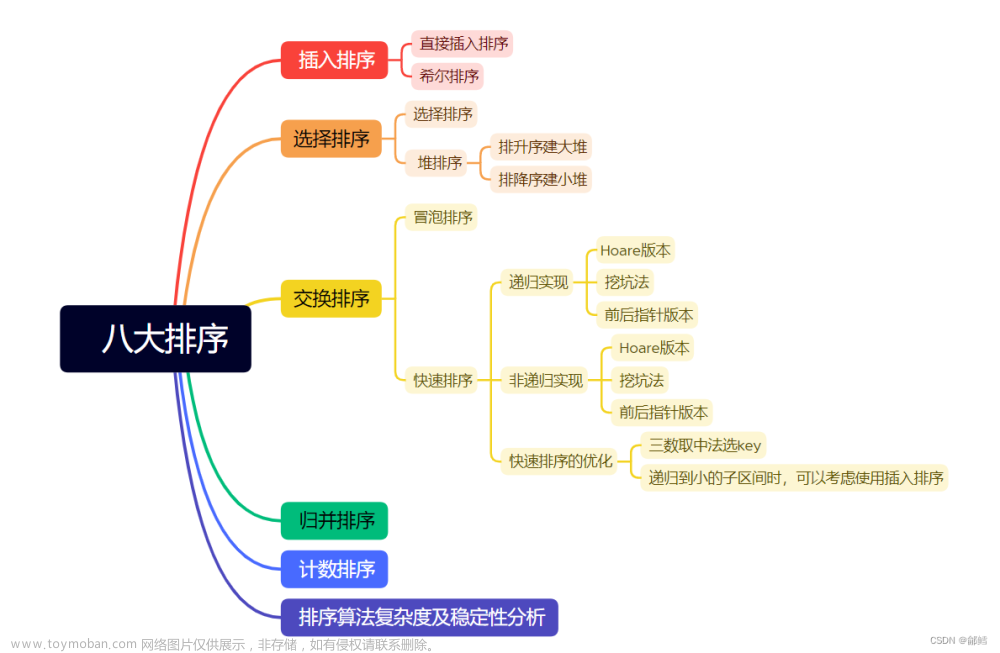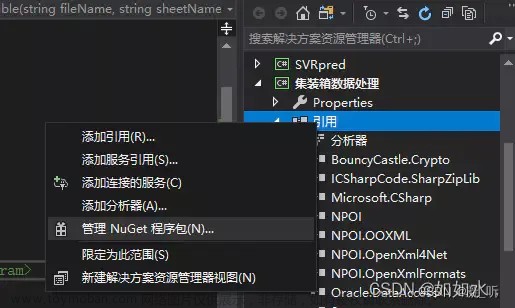写在最前面,如果你只是来找答案的,那么很遗憾,本文尽量避免给出最后结果,本文适合Linux0基础学生,给出详细的环境配置过程,实验本身其实很简单,供大家一起学习交流。
实验1
1.编程实现以下指定功能,并利用Hadoop提供的Shell命令完成相同任务:
-
向HDFS 中上传任意文本文件,如果指定的文件在HDFS中已经存在,由用户指定是追加到原有文件末尾还是覆盖原有的文件;
-
从HDFS中下载指定文件,如果本地文件与要下载的文件名称相同,则自动对下载的文件重命名;
-
将HDFS中指定文件的内容输出到终端中;
-
显示 HDFS中指定的文件的读写权限、大小、创建时间、路径等信息;
-
给定HDFS中某一个目录,输出该目录下的所有文件的读写权限、大小、创建时间、路径等信息,如果该文件是目录,则递归输出该目录下所有文件相关信息;
-
提供一个HDFS内的文件的路径,对该文件进行创建和删除操作。如果文件所在目录不存在,则自动创建目录;
-
提供一个 HDFS的目录的路径,对该目录进行创建和删除操作。创建目录时,如果目录文件所在目录不存在则自动创建相应目录;删除目录时,由用户指定当该目录不为空时是否还删除该目录;
-
向HDFS中指定的文件追加内容,由用户指定内容追加到原有文件的开头或结尾;
-
删除HDFS中指定的文件;
-
删除HDFS中指定的目录,由用户指定目录中如果存在文件时是否删除目录;
-
在 HDFS 中,将文件从源路径移动到目的路径。
自行下载VMware虚拟机(学校给正版软件)
我使用的是Ubuntu镜像
所有资料:https://pan.baidu.com/s/1uXvuWMKPLBb5hXSMnuB3og?pwd=lgf6
本来想把配好的环境也放网盘的 但是配好环境后26g 所以就不传了 大家加油吧

镜像安装需要一些时间,同时去官方或者网盘里下载
Apache Download Mirrors
下好之后怎么安装呢?当然是看官方文档了
Apache Hadoop 3.3.6 – Hadoop: Setting up a Single Node Cluster.
因为是java体系下的东西,所以你需要确保linux里有jdk才可以启动服务。

带图形化界面还是很方便的,不过我们也经常用终端敲命令(就是windows里的cmd)。
sudo apt-get install openjdk-8-jdk输入用户密码 按y继续
sudo是管理员权限 apt是管理下载包的 下载jdk8
sudo apt install vim
sudo apt-get install ssh
sudo apt-get install pdsh然后下载一个 vim 文本编辑器和 ssh ,和windows上一样下好东西需要配环境变量,这样打开终端就可以用java命令
vim ~/.bashrc这里要注意,vim对新手很不友好 一定要学会怎么用 后面会频繁用的vim
滑倒最下面 按i进入编辑模式 粘贴
export JAVA_HOME=/usr/lib/jvm/java-8-openjdk-amd64/
export PATH=$JAVA_HOME/bin:$PATH
export PDSH_RCMD_TYPE=ssh然后按 esc 退出编辑模式 再按 :wq 保存退出 如果有权限问题:wq! 强制退出
chmod 777 xxx 命令可以修改权限 7代表可读可写可执行 三个7三个用户组
source ~/.bashrc使用 java -version 看一下有没有成功

可以使用 tar -zxvf hadoop-3.3.6.tar.gz -C . 解压 -C 注意c是大写 后面写你想解压到的路径
但我们有图形化界面 直接解压 Extract Here 改下名字 hadoop 用命令是mv

进到hadoop根目录里 然后打开一个终端配置dfs
vim etc/hadoop/hadoop-env.sh 到下面找 然后加上java路径
export JAVA_HOME= //你自己java路径vim etc/hadoop/core-site.xml
<configuration>
<property>
<name>fs.defaultFS</name>
<value>hdfs://localhost:9000</value>
</property>
</configuration>vim etc/hadoop/hdfs-site.xml
<configuration>
<property>
<name>dfs.replication</name>
<value>1</value>
</property>
</configuration>然后设置ssh
ssh-keygen -t rsa -P '' -f ~/.ssh/id_rsa
cat ~/.ssh/id_rsa.pub >> ~/.ssh/authorized_keys
chmod 0600 ~/.ssh/authorized_keys
完了ssh localhost试一下bin/hdfs namenode -format注意 每次重新启动虚拟机都需要执行这个命令进行格式化 然后才能启动hadoop服务
sbin/start-dfs.sh 启动!
jps查看运行状态

可以使用ifconfig看看本机ip地址 然后在本地浏览器打开
http://localhost:9870/ 或者在虚拟机中的浏览器输入这个网址 如果能打开以下页面 hadoop就配好了


创建两个txt文件 然后配置hdfs环境变量
vim ~/.bashrc
export PATH=/home/lgf/hadoop/bin:$PATH //你自己的hadoo路径
source ~/.bashrchdfs dfs -mkdir -p lvguofan 创建文件夹
hdfs dfs -put a.txt lvguofan 上传文件
hdfs dfs -cat lvguofan/b.txt 查看文件内容
hdfs dfs -appendToFile ./b.txt lvguofan/a.txt 追加本地文件到hdfs文件中

hdfs dfs -get lvguofan/a.txt c.txt 下载到本地

hdfs dfs -ls -h lvguofan/a.txt 看读写权限、大小、创建时间、路径等信息
hdfs dfs -ls -R 遍历所有文件
hdfs dfs -touch lvguofan/test.txt //所在目录不存在时,创建新的空白文件
hdfs dfs -rm -r lvguofan/test.txt //删除文件
hdfs dfs -mv lvguofan/a.txt lgf/a.txt
其他借鉴chatgpt吧
实验2
1.利用MapReduce编程实现以下功能。
- 文件合并与去重;
- 对输入的多个文件内容进行排序;
- 跟定表示父子关系的表格,挖掘出祖孙关系,并以表格形式输出。
配置yarn 因为mapreduce要用到
vim etc/hadoop/mapred-site.xml
<configuration>
<property>
<name>mapreduce.framework.name</name>
<value>yarn</value>
</property>
<property>
<name>mapreduce.application.classpath</name>
<value>$HADOOP_MAPRED_HOME/share/hadoop/mapreduce/*:$HADOOP_MAPRED_HOME/share/hadoop/mapreduce/lib/*</value>
</property>
</configuration>vim etc/hadoop/yarn-site.xml
<configuration>
<property>
<name>yarn.nodemanager.aux-services</name>
<value>mapreduce_shuffle</value>
</property>
<property>
<name>yarn.nodemanager.env-whitelist</name>
<value>JAVA_HOME,HADOOP_COMMON_HOME,HADOOP_HDFS_HOME,HADOOP_CONF_DIR,CLASSPATH_PREPEND_DISTCACHE,HADOOP_YARN_HOME,HADOOP_HOME,PATH,LANG,TZ,HADOOP_MAPRED_HOME</value>
</property>
</configuration>sbin/start-yarn.sh 启动!
http://localhost:8088/ 如果能打开 yarn就配好了

在左侧应用商店或者去官网下载一个Eclipse或者idea
我们用的是x86架构 我用的eclipse 不过也提供idea的安装教程


如果是idea 安装后pwd 记一下路径然后配环境变量

vim ~/.bashrc
export IDEA_HOME=/home/lgf/idea/idea-IC-233.11799.241/
export PATH=:$PATH:${IDEA_HOME}/bin
source ~/.bashrcidea.sh 启动!

和windows的一摸一样 创一个工程可以跑通

接下来导hadoop根目录里/share/hadoop文件夹中的hdfs、mapreduce、yarn、common的包

其实可以再下一个maven管理包,就不用导包了,挺麻烦还容易出错的。
如果是eclipse也要导包

数据和代码借鉴头歌大数据
文件合并与去重;
a.txt
first
second
b.txt
second
thirdpackage hdfs;
import java.io.IOException;
import org.apache.hadoop.conf.Configuration;
import org.apache.hadoop.fs.Path;
import org.apache.hadoop.io.Text;
import org.apache.hadoop.mapreduce.Job;
import org.apache.hadoop.mapreduce.Mapper;
import org.apache.hadoop.mapreduce.Reducer;
import org.apache.hadoop.mapreduce.lib.input.FileInputFormat;
import org.apache.hadoop.mapreduce.lib.output.FileOutputFormat;
public class Merge {
/**
* @param args
* 对A,B两个文件进行合并,并剔除其中重复的内容,得到一个新的输出文件C
*/
//重载map函数,直接将输入中的value复制到输出数据的key上
public static class Map extends Mapper<Object, Text, Text, Text>{
private static Text text = new Text();
public void map(Object key, Text value, Context context) throws IOException,InterruptedException{
text = value;
context.write(text, new Text(""));
}
}
//重载reduce函数,直接将输入中的key复制到输出数据的key上
public static class Reduce extends Reducer<Text, Text, Text, Text>{
public void reduce(Text key, Iterable<Text> values, Context context ) throws IOException,InterruptedException{
context.write(key, new Text(""));
}
}
public static void main(String[] args) throws Exception{
// TODO Auto-generated method stub
Configuration conf = new Configuration();
conf.set("fs.default.name","hdfs://localhost:9000");
String[] otherArgs = new String[]{"/xxx","/out"}; /* 直接设置输入参数 */
if (otherArgs.length != 2) {
System.err.println("Usage: wordcount <in> <out>");
System.exit(2);
}
Job job = Job.getInstance(conf,"Merge and duplicate removal");
job.setJarByClass(Merge.class);
job.setMapperClass(Map.class);
job.setCombinerClass(Reduce.class);
job.setReducerClass(Reduce.class);
job.setOutputKeyClass(Text.class);
job.setOutputValueClass(Text.class);
FileInputFormat.addInputPath(job, new Path(otherArgs[0]));
FileOutputFormat.setOutputPath(job, new Path(otherArgs[1]));
System.exit(job.waitForCompletion(true) ? 0 : 1);
}
}

对输入的多个文件内容进行排序;
1.txt
33
37
12
40
2.txt
4
16
39
5
3.txt
1
45
25
记得把之前的删了,或者换个位置,别把上个问题的数据也合并了

package hdfs;
import java.io.IOException;
import org.apache.hadoop.conf.Configuration;
import org.apache.hadoop.fs.Path;
import org.apache.hadoop.io.IntWritable;
import org.apache.hadoop.io.Text;
import org.apache.hadoop.mapreduce.Job;
import org.apache.hadoop.mapreduce.Mapper;
import org.apache.hadoop.mapreduce.Partitioner;
import org.apache.hadoop.mapreduce.Reducer;
import org.apache.hadoop.mapreduce.lib.input.FileInputFormat;
import org.apache.hadoop.mapreduce.lib.output.FileOutputFormat;
import org.apache.hadoop.util.GenericOptionsParser;
public class MergeSort {
/**
* @param args
* 输入多个文件,每个文件中的每行内容均为一个整数
* 输出到一个新的文件中,输出的数据格式为每行两个整数,第一个数字为第二个整数的排序位次,第二个整数为原待排列的整数
*/
//map函数读取输入中的value,将其转化成IntWritable类型,最后作为输出key
public static class Map extends Mapper<Object, Text, IntWritable, IntWritable>{
private static IntWritable data = new IntWritable();
public void map(Object key, Text value, Context context) throws IOException,InterruptedException{
/********** Begin **********/
String text = value.toString();
data.set(Integer.parseInt(text));
context.write(data, new IntWritable(1));
/********** End **********/
}
}
//reduce函数将map输入的key复制到输出的value上,然后根据输入的value-list中元素的个数决定key的输出次数,定义一个全局变量line_num来代表key的位次
public static class Reduce extends Reducer<IntWritable, IntWritable, IntWritable, IntWritable>{
private static IntWritable line_num = new IntWritable(1);
public void reduce(IntWritable key, Iterable<IntWritable> values, Context context) throws IOException,InterruptedException{
/********** Begin **********/
for(IntWritable val : values){
context.write(line_num, key);
line_num = new IntWritable(line_num.get() + 1);
}
/********** End **********/
}
}
//自定义Partition函数,此函数根据输入数据的最大值和MapReduce框架中Partition的数量获取将输入数据按照大小分块的边界,然后根据输入数值和边界的关系返回对应的Partiton ID
public static class Partition extends Partitioner<IntWritable, IntWritable>{
public int getPartition(IntWritable key, IntWritable value, int num_Partition){
/********** Begin **********/
int Maxnumber = 65223;//int型的最大数值
int bound = Maxnumber/num_Partition+1;
int keynumber = key.get();
for (int i = 0; i<num_Partition; i++){
if(keynumber<bound * (i+1) && keynumber>=bound * i){
return i;
}
}
return -1;
/********** End **********/
}
}
public static void main(String[] args) throws Exception{
// TODO Auto-generated method stub
Configuration conf = new Configuration();
conf.set("fs.default.name","hdfs://localhost:9000");
String[] otherArgs = new String[]{"/lgf","/output"}; /* 直接设置输入参数 */
if (otherArgs.length != 2) {
System.err.println("Usage: wordcount <in> <out>");
System.exit(2);
}
Job job = Job.getInstance(conf,"Merge and sort");
job.setJarByClass(MergeSort.class);
job.setMapperClass(Map.class);
job.setReducerClass(Reduce.class);
job.setPartitionerClass(Partition.class);
job.setOutputKeyClass(IntWritable.class);
job.setOutputValueClass(IntWritable.class);
FileInputFormat.addInputPath(job, new Path(otherArgs[0]));
FileOutputFormat.setOutputPath(job, new Path(otherArgs[1]));
System.exit(job.waitForCompletion(true) ? 0 : 1);
}
}

跟定表示父子关系的表格,挖掘出祖孙关系,并以表格形式输出。
child parent
Steven Lucy
Steven Jack
Jone Lucy
Jone Jack
Lucy Mary
Lucy Frank
Jack Alice
Jack Jesse
David Alice
David Jesse
Philip David
Philip Alma
Mark David
Mark Alma
grandchild grandparent
Steven Alice
Steven Jesse
Jone Alice
Jone Jesse
Steven Mary
Steven Frank
Jone Mary
Jone Frank
Philip Alice
Philip Jesse
Mark Alice
Mark Jesse
import java.io.IOException;
import java.util.*;
import org.apache.hadoop.conf.Configuration;
import org.apache.hadoop.fs.Path;
import org.apache.hadoop.io.IntWritable;
import org.apache.hadoop.io.Text;
import org.apache.hadoop.mapreduce.Job;
import org.apache.hadoop.mapreduce.Mapper;
import org.apache.hadoop.mapreduce.Reducer;
import org.apache.hadoop.mapreduce.lib.input.FileInputFormat;
import org.apache.hadoop.mapreduce.lib.output.FileOutputFormat;
import org.apache.hadoop.util.GenericOptionsParser;
public class simple_data_mining {
public static int time = 0;
/**
* @param args
* 输入一个child-parent的表格
* 输出一个体现grandchild-grandparent关系的表格
*/
//Map将输入文件按照空格分割成child和parent,然后正序输出一次作为右表,反序输出一次作为左表,需要注意的是在输出的value中必须加上左右表区别标志
public static class Map extends Mapper<Object, Text, Text, Text>{
public void map(Object key, Text value, Context context) throws IOException,InterruptedException{
/********** Begin **********/
String child_name = new String();
String parent_name = new String();
String relation_type = new String();
String line = value.toString();
int i = 0;
while(line.charAt(i) != ' '){
i++;
}
String[] values = {line.substring(0,i),line.substring(i+1)};
if(values[0].compareTo("child") != 0){
child_name = values[0];
parent_name = values[1];
relation_type = "1";//左右表区分标志
context.write(new Text(values[1]), new Text(relation_type+"+"+child_name+"+"+parent_name));
//左表
relation_type = "2";
context.write(new Text(values[0]), new Text(relation_type+"+"+child_name+"+"+parent_name));
//右表
}
/********** End **********/
}
}
public static class Reduce extends Reducer<Text, Text, Text, Text>{
public void reduce(Text key, Iterable<Text> values,Context context) throws IOException,InterruptedException{
/********** Begin **********/
if(time == 0){ //输出表头
context.write(new Text("grand_child"), new Text("grand_parent"));
time++;
}
int grand_child_num = 0;
String grand_child[] = new String[10];
int grand_parent_num = 0;
String grand_parent[]= new String[10];
Iterator ite = values.iterator();
while(ite.hasNext()){
String record = ite.next().toString();
int len = record.length();
int i = 2;
if(len == 0) continue;
char relation_type = record.charAt(0);
String child_name = new String();
String parent_name = new String();
//获取value-list中value的child
while(record.charAt(i) != '+'){
child_name = child_name + record.charAt(i);
i++;
}
i=i+1;
//获取value-list中value的parent
while(i<len){
parent_name = parent_name+record.charAt(i);
i++;
}
//左表,取出child放入grand_child
if(relation_type == '1'){
grand_child[grand_child_num] = child_name;
grand_child_num++;
}
else{//右表,取出parent放入grand_parent
grand_parent[grand_parent_num] = parent_name;
grand_parent_num++;
}
}
if(grand_parent_num != 0 && grand_child_num != 0 ){
for(int m = 0;m<grand_child_num;m++){
for(int n=0;n<grand_parent_num;n++){
context.write(new Text(grand_child[m]), new Text(grand_parent[n]));
//输出结果
}
}
}
/********** End **********/
}
}
public static void main(String[] args) throws Exception{
// TODO Auto-generated method stub
Configuration conf = new Configuration();
conf.set("fs.default.name","hdfs://localhost:9000");
String[] otherArgs = new String[]{"input","output"}; /* 直接设置输入参数 */
if (otherArgs.length != 2) {
System.err.println("Usage: wordcount <in> <out>");
System.exit(2);
}
Job job = Job.getInstance(conf,"Single table join ");
job.setJarByClass(simple_data_mining.class);
job.setMapperClass(Map.class);
job.setReducerClass(Reduce.class);
job.setOutputKeyClass(Text.class);
job.setOutputValueClass(Text.class);
FileInputFormat.addInputPath(job, new Path(otherArgs[0]));
FileOutputFormat.setOutputPath(job, new Path(otherArgs[1]));
System.exit(job.waitForCompletion(true) ? 0 : 1);
}
}
最后一个就不给图了
其实在本地电脑也能用idea 配一下环境 ip地址填虚拟机的 参考下文
windows IDEA连接虚拟机Hadoop集群 - 知乎
实验3
编程实现以下功能,并用Hadoop提供的HBase Shell命令完成相同任务。
-
列出HBase所有表的相关信息,如表名;
-
在终端打印出指定表的所有记录数据;
-
向已经创建好的表添加和删除指定的列族或列;
-
清空指定表的所有记录数据;
-
统计表的行数。
借鉴官网教程
Apache HBase ™ Reference Guide
vim conf/hbase-env.sh


bin/start-hbase.sh 启动!
http://localhost:16010/ 如果能打开网页就算成功

bin/hbase shell 就可以进到命令行了
但是感觉命令窗一直断 很慢 搜了好久才解决
vim conf/hbase-site.xml
<property>
<name>hbase.wal.provider</name>
<value>filesystem</value>
</property>重启一下
bin/stop-hbase.sh 关闭
bin/start-hbase.sh 启动
新建表
create 'test', 'cf'查看
list 'test'具体信息
describe 'test'插入数据
put 'test', 'row1', 'cf:a', 'value1'
put 'test', 'row2', 'cf:b', 'value2'
put 'test', 'row3', 'cf:c', 'value3'查看数据
scan 'test'查看某一行
get 'test', 'row1'删除表中所有行
truncate 'test'删之前需要disable
enable 'test'disable 'test'删除表
drop 'test'统计行数
count 'test'这个hbase也是有java api的 可以在ide上写代码运行
实验4
1.实现以下功能。
- 安装Spark,并分别以单机模式和伪分布式进行配置;
- 使用Spark Shell编写Scala代码,统计一个文本文件的词频;
- 使用PySpark shell编写Python代码,利用泰勒展开公式计算自然常数e=n=0∞1n!
 。
。
安装Spark,并分别以单机模式和伪分布式进行配置;
下载解压 Index of /spark/spark-3.5.0
直接 ./bin/spark-shell 启动!

使用Spark Shell编写Scala代码,统计一个文本文件的词频;
 sc.textFile("a.txt").flatMap(_.split(" ")).map((_,1)).reduceByKey(_+_).collect
sc.textFile("a.txt").flatMap(_.split(" ")).map((_,1)).reduceByKey(_+_).collect
这就是python 一行代码的事

:quit 退出
使用PySpark shell编写Python代码,利用泰勒展开公式计算自然常数e=n=0∞1n!。
./bin/pyspark 启动!
import math
def approximated_e(n, x=1):
E = 0.0
for i in range(n):
E = E + (x**i)/math.factorial(i)
return E
e_std = math.e
print('%.50f' % e_std)
e_100 = approximated_e(100, 1)
print('n =100: %.50f %.50f' % (e_100, math.fabs(e_std-e_100)))这个代码最好一行一行打
def函数一起复制 注意缩进 py没有; 看的是缩进

同时也可以下载conda管理包 再下载一个pycharm,就可以在ide上编写代码了文章来源:https://www.toymoban.com/news/detail-753367.html
无力吐槽,不学Linux直接上手,还要在上面部署服务,看任务书还准备搞分布式部署,大部分人根本学不来,所以出一个手把手教程,这个大数据实验算是最难的实验了,如果遇到问题可以私信。文章来源地址https://www.toymoban.com/news/detail-753367.html
到了这里,关于轻大21级软工大数据实验(手把手教你入门Hadoop、hbase、spark)的文章就介绍完了。如果您还想了解更多内容,请在右上角搜索TOY模板网以前的文章或继续浏览下面的相关文章,希望大家以后多多支持TOY模板网!














